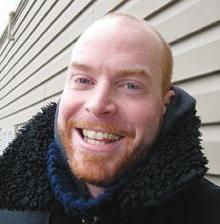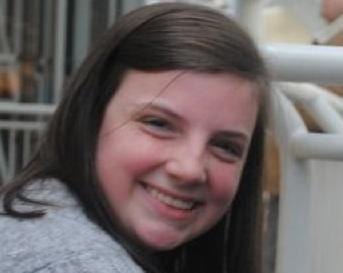
Ross Johnstone uses film to help students feel more comfortable in school. Credit: Andrea Warner
As we know from teen movies and TV shows, there are a handful of tidy archetypal characters associated with high school: the privileged jock or cheerleader, the nerdy sidekick, the subversive outsider. Coming-of-age stories are also usually filled with change – evolving characters and contexts make for interesting and relatable storylines.
But TV shows often compress the depth and complexity of high school to make it understandable and identifiable. And most students have anything but a tidy high school experience; many spend these formative years constantly striving for peer acceptance.
This is a task made doubly challenging for those who openly identify as gay, lesbian, trans or queer in high school but one that Mississauga student Claire Purdy is becoming comfortable with.
“When I came out people were shocked and acted a little strangely around me, but for the most part people were very accepting and proud of my courage.”
Purdy, who came out last year at the start of Grade 11, says she encountered a mix of homophobia and support. “No matter what people say, think or do, it is important to do what I believe is right,” she says.
Purdy is now in Grade 12 and the co-president of her school’s gay-straight alliance (GSA). The fight for GSAs in Ontario schools has recently been a flash point across the province, dividing lawmakers and pitting religious groups against gay activists.
After much debate, Ontario passed anti-bullying Bill 13 on June 5. It mandates the creation of GSAs in all public schools if students request them.
While Purdy is confident to lead a GSA at her school, Queer Ontario’s Casey Oraa points out that the same cannot be said of all students. He remembers volunteering at an LGBTQ centre while at university, where many students were coming out for the first time. “They didn’t come out in high school; they didn’t feel they had the support,” Oraa says, noting that for many queer youth, high school is not a safe enough space, and this toll can add up.
Sadly, there are troubling statistics to back up such anecdotes: one study found that 73 percent of queer high school students feel unsafe in their schools and these students are 14 times more likely to commit suicide.
Purdy’s main concern this year is about the volume of class work she’ll have in her senior year. It’s a good problem to have, and she adds that for her, coming out relieved a burden, too: she could be herself at school, and that’s always conducive to a healthier learning and social environment.
Whether Ontario school boards provide settings where students can feel secure and safe is an open question. Despite the passage of Bill 13, which allows students to choose the name of their own peer-support groups, some school trustees have made noises about flouting the law. There could soon also be a battle over the role homophobic pastoral guidelines play in the Catholic boards’ curriculum.
Oraa stresses that this highlights the need for ongoing vigilance to ensure the best outcomes for students.
GSAs have a positive track record elsewhere. A 2011 US study followed 245 students who participated in high school GSAs. Although it points to improved outcomes on depression and test scores, it also cautions that GSAs alone are not a cure-all for the myriad and complicated problems faced by gay teens.
Oraa says diverse tools have to be used to create a positive atmosphere, and he’s hoping to see changes to Ontario’s sex education curriculum.
Ross Johnstone agrees. The director of education at Out in Schools, a Vancouver-based organization that teaches students about gay bullying through film, has helped teach 30,000 kids in workshops and presentations since 2004.
“Since the beginning of time, high school is influenced by, and influences, popular culture,” he says. Studies show this element is important, too, particularly insofar as youth take their cues for self-perception from identifiable role models and media figures.
Johnstone tries to take this a step further by empowering youth by providing resources to make films. By telling their own stories, the program hopes to enable students to see themselves on screen and not be limited by the storylines offered by mainstream outlets. “Some students who are a bit more brave, they can create some positive images and know they’re not alone.”
Some graduates from the program continue in the field and Johnstone says some filmmakers have made submissions to the Vancouver Queer Film Festival.
Says Purdy, “My peers have definitely changed the way they view queer people. Before they may not have fully understood what being queer means, what the gay rights movement is, et cetera, but by talking about it they have a better idea of why it’s important to help and support queer youth.”

 Why you can trust Xtra
Why you can trust Xtra


